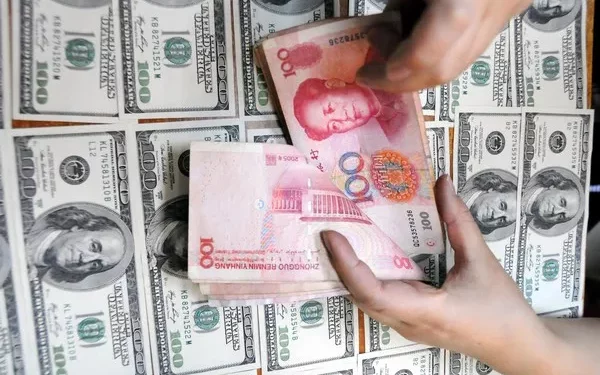The foreign exchange (forex) market plays a critical role in the global economy, with currencies from all over the world constantly being traded. For anyone involved in international travel, investment, or business, understanding currency conversion is crucial. A common question that many people encounter is: How much is $140 USD in AUD?
The short answer to this question depends on the current exchange rate between the United States Dollar (USD) and the Australian Dollar (AUD). However, determining the exact amount can be more complex than simply looking up a single exchange rate. This article will break down how exchange rates work, why they fluctuate, and how to convert USD to AUD effectively. Whether you are planning a trip, investing in international markets, or simply curious about currency conversion, this article will give you a thorough understanding of how much $140 USD is in AUD.
Understanding the Foreign Exchange Market
Before we dive into how $140 USD is converted into AUD, it’s important to understand how the foreign exchange market works. The forex market is the world’s largest and most liquid financial market, where participants exchange currencies for various reasons. The exchange rates between different currencies fluctuate constantly due to several factors, such as:
Interest Rates – Central banks set interest rates, and these rates can influence the value of a country’s currency. Higher interest rates typically attract more foreign capital, which can increase the value of the currency.
Economic Indicators – Data such as GDP growth, unemployment rates, inflation, and trade balances can give an indication of a country’s economic strength. Strong economic performance generally leads to a stronger currency.
Political Stability – Political events, such as elections, policy changes, and geopolitical tensions, can affect investor confidence in a country’s currency.
Market Sentiment – Traders in the forex market are constantly analyzing news, trends, and forecasts to predict currency movements. Changes in market sentiment can cause significant fluctuations in exchange rates.
Supply and Demand – Ultimately, currency exchange rates are driven by supply and demand. If demand for the Australian Dollar rises relative to the US Dollar, the value of the AUD will increase compared to the USD.
The exchange rate is the price of one currency in terms of another currency. For instance, an exchange rate of 1 USD to 1.30 AUD means that for every 1 US Dollar, you will receive 1.30 Australian Dollars. However, this rate can fluctuate throughout the day due to the factors mentioned above.
How Exchange Rates Affect the Conversion of USD to AUD
Now, let’s discuss how the exchange rate influences the conversion of USD to AUD. The exchange rate between the USD and AUD is determined by a variety of market forces. For example, if the exchange rate is 1 USD = 1.30 AUD, it means that for every US Dollar, you would get 1.30 Australian Dollars.
To convert $140 USD to AUD using this exchange rate, you would simply multiply the amount in USD by the exchange rate:
140 USD×1.30 (exchange rate)=182 AUD
So, $140 USD would equal 182 AUD at an exchange rate of 1.30.
However, exchange rates can fluctuate, meaning that the amount of AUD you would receive in exchange for $140 USD could vary from day to day. You may see an exchange rate of 1 USD = 1.32 AUD or 1 USD = 1.28 AUD, and this would affect how much Australian Dollars you would get in return.
Exchange Rate Types: Spot Rates, Forward Rates, and More
There are different types of exchange rates that are used in the forex market, and they affect how currency conversions are conducted.
Spot Rate – The spot rate is the current exchange rate at which currencies can be exchanged immediately. This is the rate that most consumers and businesses see when they look up currency conversion rates online or visit a currency exchange service.
Forward Rate – A forward rate is an exchange rate agreed upon today for a currency transaction that will take place at a future date. This can help businesses and investors hedge against currency fluctuations.
Cross Rates – Cross rates refer to the exchange rate between two currencies that do not involve the US Dollar. For example, if someone wants to convert British Pounds (GBP) into AUD, they would use the GBP/AUD exchange rate, rather than USD as a middle currency.
Wholesale Rates – These are the rates that large institutions, such as banks, use to exchange currencies in large volumes. These rates are often better than the retail rates offered to individual consumers.
Retail Rates – These are the rates offered by currency exchange services or financial institutions for smaller transactions. These rates often include a margin or markup, meaning the consumer may not get the best possible rate.
If you are converting $140 USD to AUD through a currency exchange service, it is important to know the current spot rate and the fees or margins charged by the service.
How Much Is $140 USD in AUD Right Now?
To give you an accurate answer to the question, “How much is $140 USD in AUD?” you would need to look up the current exchange rate between the two currencies. As mentioned earlier, the exchange rate fluctuates constantly, and it can vary from one service provider to another.
If the current exchange rate is 1 USD = 1.30 AUD, then $140 USD would be converted to 182 AUD. If the exchange rate shifts to 1 USD = 1.32 AUD, then $140 USD would be worth 184.80 AUD.
However, it’s important to note that when converting currencies, there are often fees involved. These can include:
Transaction Fees – Some currency exchange services or banks charge a fee for processing the conversion.
Service Fees – Some services offer less favorable exchange rates as a way to cover their operating costs.
Margin on Exchange Rates – Currency exchange providers may offer you a slightly worse exchange rate than the market rate, which is their way of earning profit.
Always check the exact rates and fees involved when converting your currency to get an accurate idea of how much AUD you will receive.
Why Do Exchange Rates Fluctuate?
As mentioned earlier, exchange rates fluctuate constantly. But why do they change in the first place? Several factors influence the movement of exchange rates:
Economic Data – Reports such as GDP growth, inflation rates, unemployment figures, and trade balances affect the value of a currency. For example, if Australia reports strong economic growth, the value of the AUD may rise relative to the USD.
Interest Rate Differentials – When the US Federal Reserve raises or lowers interest rates, the USD can appreciate or depreciate in value. Similarly, if the Reserve Bank of Australia changes its interest rate policy, the AUD can move against the USD.
Geopolitical Events – Political events such as elections, referendums, or natural disasters can cause uncertainty, which may impact currency markets. For example, tensions in the US-China trade relationship can lead to shifts in the value of the USD and AUD.
Market Speculation – Forex traders and investors constantly speculate on the future value of currencies based on the available information. This speculative activity can lead to rapid changes in exchange rates, even in short periods.
Practical Examples of USD to AUD Conversion
Here are a few scenarios to better understand how exchange rates impact the conversion of USD to AUD:
Traveling to Australia – If you are traveling to Australia and you exchange $140 USD for AUD at the current rate of 1 USD = 1.30 AUD, you will receive 182 AUD. However, if the exchange rate drops to 1 USD = 1.28 AUD, you would only receive 179.20 AUD. Always keep an eye on exchange rates before exchanging money.
International Investments – Suppose you are an investor in the United States looking to purchase stocks or bonds in Australia. If the AUD strengthens relative to the USD, your investment in Australian assets will be worth more when converted back to US Dollars.
Business Transactions – If you are a business conducting trade between the US and Australia, fluctuations in the exchange rate can affect the cost of goods and services. For example, if the AUD weakens relative to the USD, Australian exports may become cheaper for American buyers.
Conclusion
In conclusion, the conversion of $140 USD to AUD depends on the current exchange rate between the US Dollar and the Australian Dollar. Exchange rates fluctuate due to various factors, including economic data, interest rates, political events, and market sentiment. It is essential to understand how these factors influence the value of currencies in order to make informed decisions when exchanging money or conducting international transactions.
To get an accurate conversion of $140 USD to AUD, it is necessary to check the current spot rate, keeping in mind any fees or service charges involved. As the forex market is highly liquid and volatile, exchange rates can change rapidly, so it’s always a good idea to stay informed about market movements. Whether you’re traveling to Australia, investing in international markets, or engaging in business transactions, understanding exchange rates will help you navigate the complexities of currency conversion with greater confidence.
Related Topics:


























